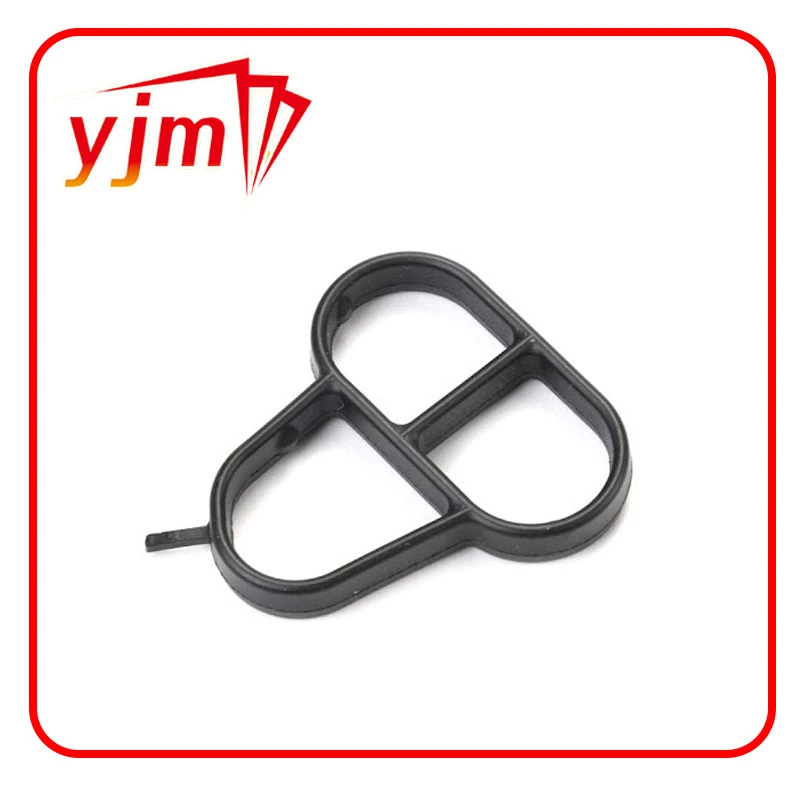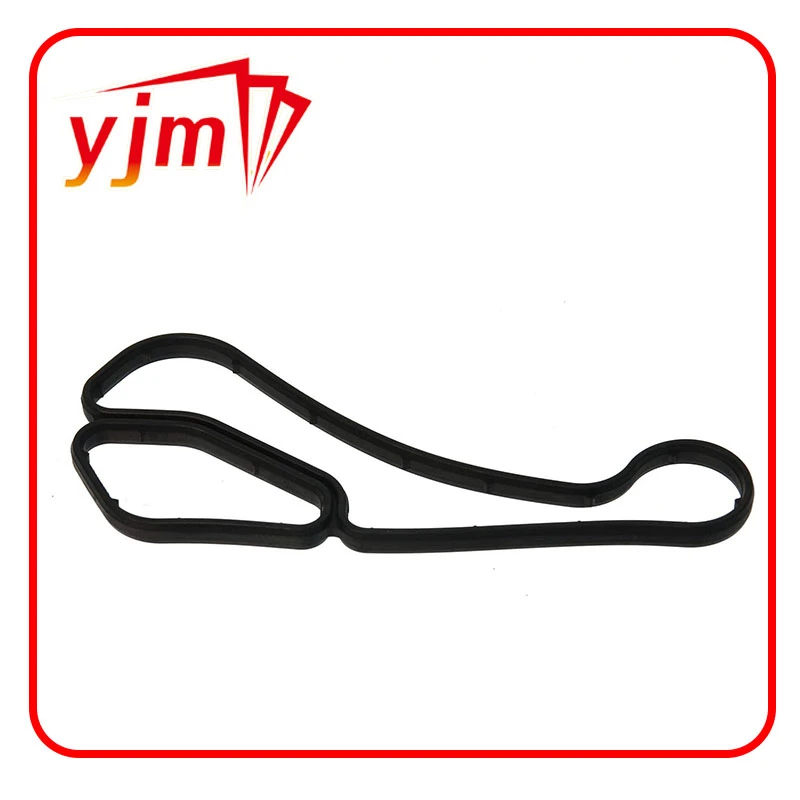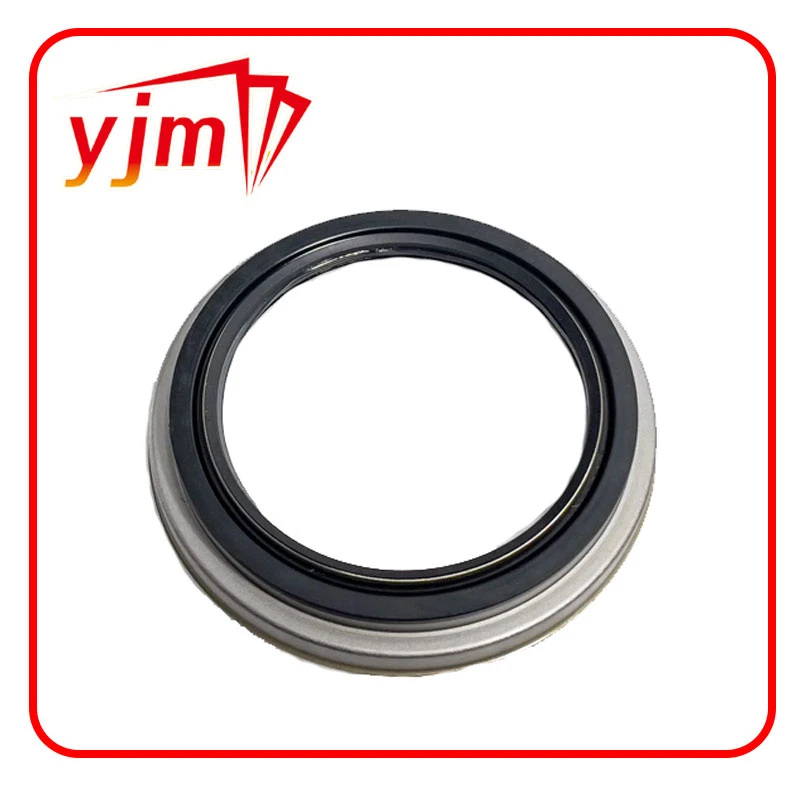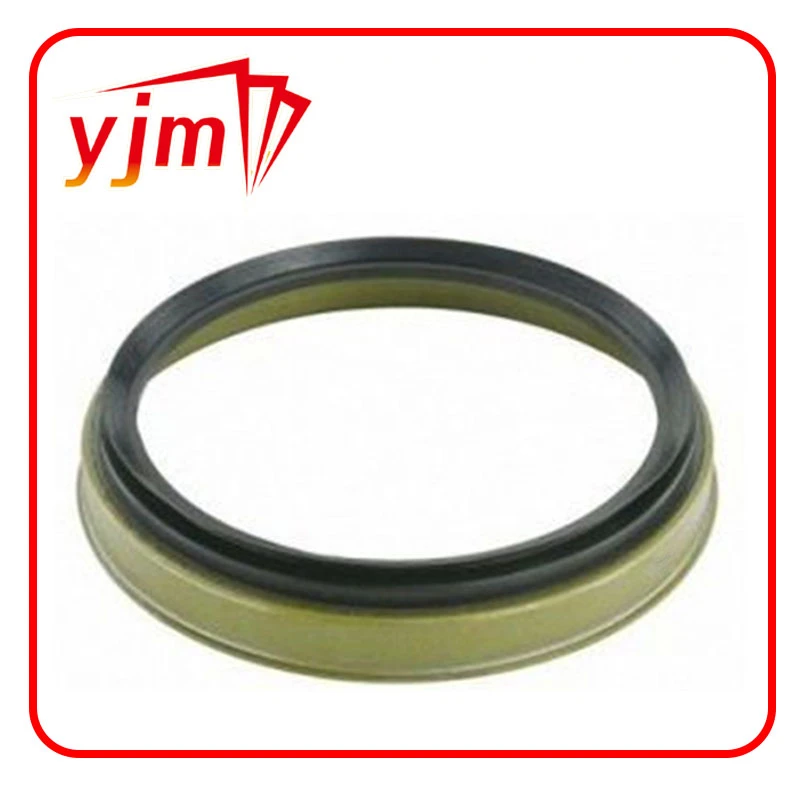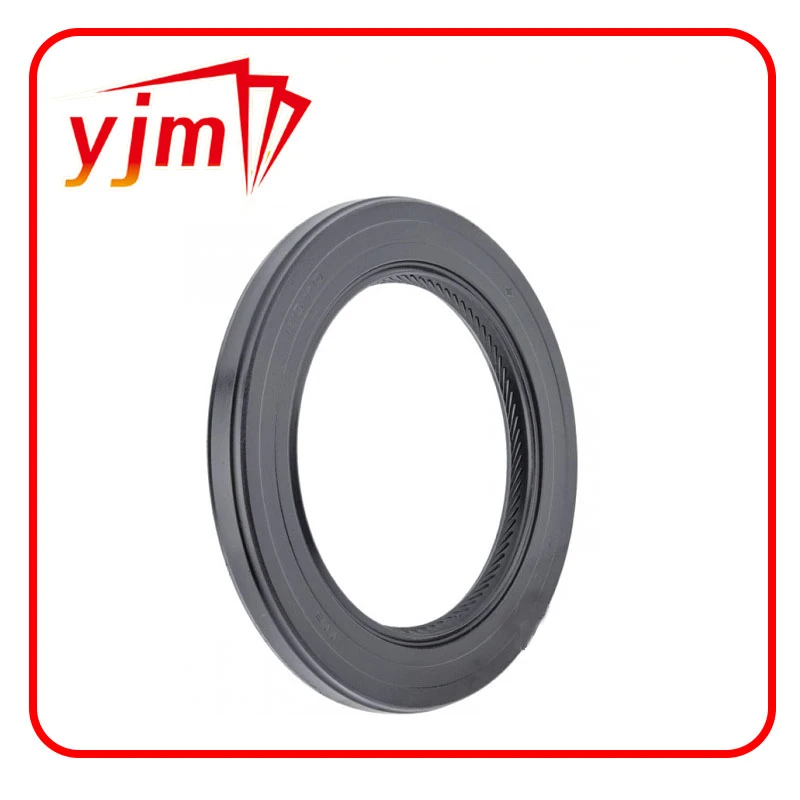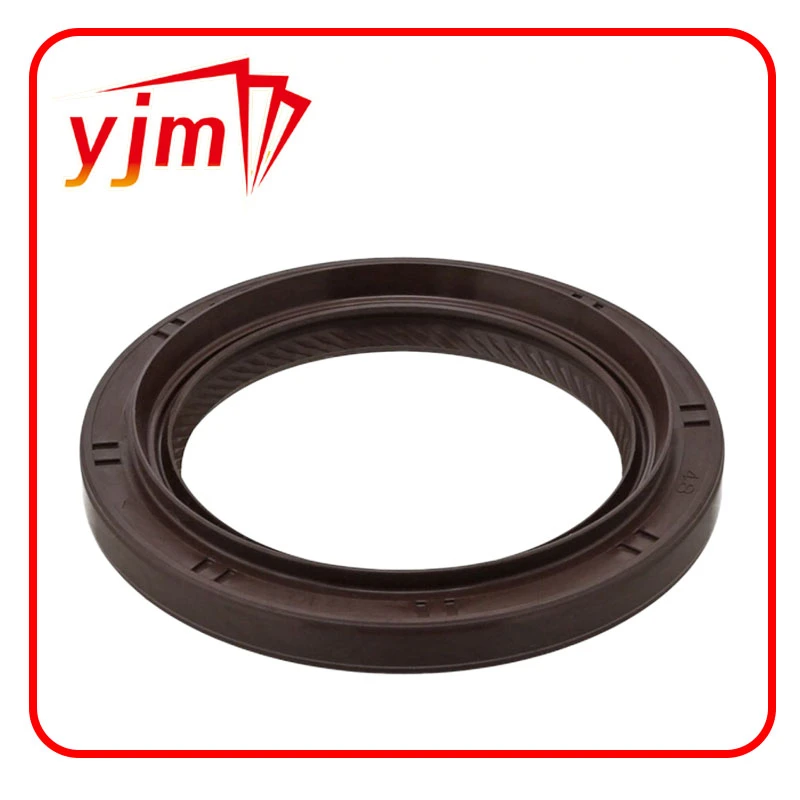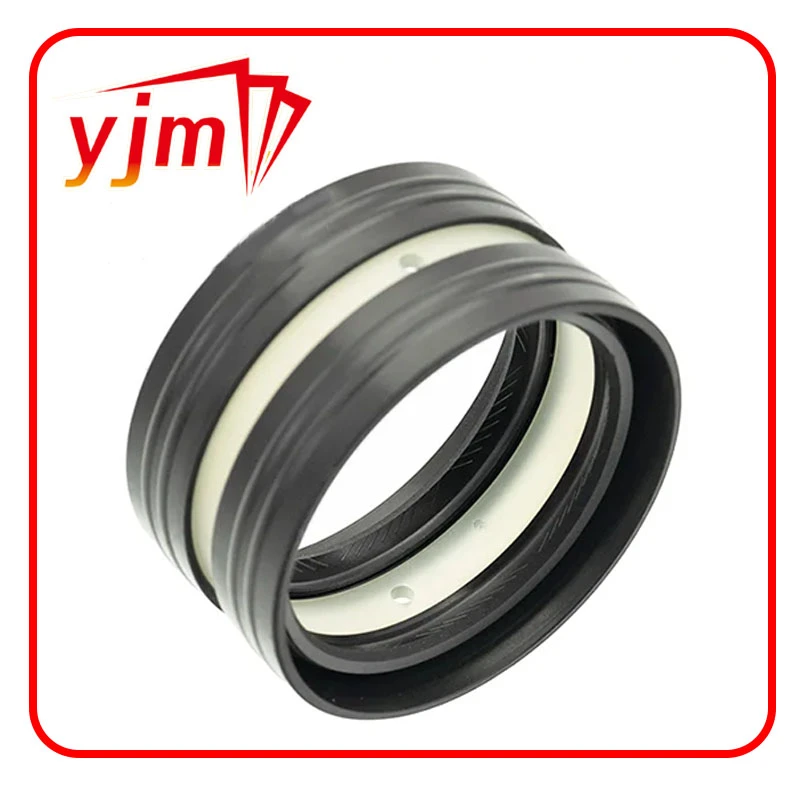Durable and Precise Oil Seal 75x95x10 for Efficient Machinery | YJM Seal
Understanding the Importance of Oil Seal 75x95x10 in Industrial Applications
At first glance, an oil seal 75x95x10 might seem like just another small component in a massive machine. But once you dig a little deeper, you realize it carries a disproportionate amount of importance — preventing leaks, contamination, and equipment failure globally. These seals are the quiet heroes behind smooth manufacturing lines, automotive engines, and heavy industry powerhouses worldwide.
Given the growing push toward machinery longevity and sustainable manufacturing, understanding such seals’ role isn’t just technical trivia. It’s vital. A well-chosen and well-maintained oil seal minimizes costly downtime and waste — benefits that echo far beyond factory walls, touching economic and environmental health alike.
The Global Context: Why Oil Seals Matter More Than Ever
Industries worldwide rely heavily on rotating and reciprocating equipment. According to ISO standards, oil seals are crucial components ensuring machines run efficiently. The global machinery market is expected to exceed $1.2 trillion by 2026, and the demand for quality sealing solutions is growing alongside it.
Leakages from poorly sealed equipment lead to wasted lubricants, increased energy consumption, and harmful emissions — challenges that many sectors from automotive manufacturing to power plants face every day. Frankly, in high-performance engines and heavy industrial gearboxes, even a tiny gap can lead to a catastrophic failure or environmental hazard.
Therefore, choosing an oil seal like the oil seal 75x95x10, which is a common dimension for many mid-sized shafts, addresses a broad spectrum of industry concerns. When it performs well, it’s a subtle but profound part of global sustainability efforts.
What Exactly Is an Oil Seal 75x95x10?
Put simply, an oil seal 75x95x10 is a type of radial shaft seal designed to fit around a 75 mm shaft diameter, with an outer diameter of 95 mm and a thickness of 10 mm. Its job? To keep lubricants in and contaminants out — oils, greases, dust, and moisture.
Modern industry uses these seals in pumps, gearboxes, compressors, differentials, and countless other mechanisms—but they aren’t just industrial luxuries. Even humanitarian efforts that rely on reliable machinery, such as portable water pumps in disaster zones, depend on these small but mighty parts.
Mini Takeaway:
- Oil seal 75x95x10 is a precise radial seal type essential for protecting machinery.
- Its design directly prevents leakage and contamination, extending equipment life.
- Widespread use means it’s a fundamental piece in global industrial processes.
Core Components & Key Factors Shaping Their Effectiveness
1. Material Composition
This size oil seal typically uses nitrile rubber (NBR), fluoroelastomer (FKM), or silicone rubber depending on temperature and chemical exposure. For instance, NBR is favored for oil resistance in automotive engines, whereas FKM suits high-heat industrial applications. You want your seal material to tolerate oil, heat, and aging — otherwise, it’s money down the drain.
2. Lip Design and Spring Tension
The lip forms the actual sealing edge between shaft and housing. A single or double-lipped design helps enhance sealing or contamination exclusion. Many seals also include a garter spring that keeps the lip tight against the shaft — translating to consistent pressure and longer wear resistance.
3. Size & Dimensional Accuracy
Despite the seemingly arbitrary numbers 75x95x10, having an accurate fit guarantees minimal leakage paths. Over-sizing or under-sizing even by tenths of a millimeter can cause premature failure. That’s why precise manufacturing and quality assurance are critical.
4. Surface Finish and Shaft Condition
For the seal to work properly, the mating shaft’s surface roughness typically needs to be between 0.2 to 0.8 micrometers (Ra). Too rough or too smooth, and the seal lip either wears too fast or slips. This aspect often surprises non-engineers but is pivotal to success.
5. Temperature and Chemical Tolerance
Practical seals withstand operating temperatures ranging from -40°C up to 150°C or more, depending on the material. With evolving machinery using synthetic oils or additives, the chemical compatibility of seal materials is also critical to prevent swelling or degradation.
Mini Takeaway:
- Material quality, precision sizing, and lip design define seal reliability.
- Proper shaft surface finish and chemical tolerance extend seal lifespan.
- Each factor must be matched to application specifics for best results.
How Oil Seal 75x95x10 Finds Its Place Around the World
From the steel mills of Germany to textile plants in South Asia, the oil seal 75x95x10 is everywhere. It sees action inside automotive plants, agricultural equipment, pumps for municipal water treatment, and industrial compressors.
Oddly enough, some of the most critical applications happen in remote or extreme environments — like mining trucks in Canadian tundra or portable diesel generators in African clinics. Here, reliable sealing can mean life or death; failure leads not just to downtime but environmental contamination or supply chain breaks.
Post-disaster relief agencies also rely indirectly on these seals. Equipment that pumps water or fuels emergency vehicles depends on them. Without trustworthy oil sealing, mission-critical machinery could stall just when it’s needed most.
Mini Takeaway:
- Widely used across various sectors globally, from automotive to humanitarian aid.
- Enables reliable machinery operation even in challenging conditions.
- Helps uphold environmental and safety standards worldwide.
Product Specification Table: Typical Oil Seal 75x95x10 Overview
| Specification | Details |
|---|---|
| Inner Diameter (ID) | 75 mm |
| Outer Diameter (OD) | 95 mm |
| Thickness | 10 mm |
| Common Materials | NBR, FKM, Silicone |
| Operating Temperature | -40°C to 150°C (material dependent) |
| Typical Uses | Gearboxes, Pumps, Engines, Compressors |
Advantages of Using an Oil Seal 75x95x10: Long-Term Value You Can Count On
- Cost Savings: Reducing lubricant loss and equipment wear means fewer replacements and less downtime.
- Environmental Impact: Proper sealing prevents oil spills and contamination, aligning with increasingly strict environmental regulations.
- Safety and Reliability: Machines run smoother, and emergencies due to sudden failure become less frequent.
- Ease of Replacement: Widely standardized sizes like 75x95x10 make sourcing and maintenance simpler and cheaper.
- Trust and Innovation: A dependable seal boosts confidence in machinery and millwright teams, especially with new materials and coatings evolving to extend life further.
Vendor Comparison Table
| Vendor | Material Options | Lead Time | Price Range (USD) | Certifications |
|---|---|---|---|---|
| YJM Seal | NBR, FKM, Silicone | 2-4 days | $3.50 - $4.20 | ISO 9001, RoHS |
| SealTech Co. | NBR, PU, FKM | 1-2 weeks | $3.80 - $4.50 | ISO 14001 |
| Global Seal | NBR, Silicone | 5-7 days | $3.20 - $3.90 | ISO 9001, REACH |
Looking Ahead: Future Trends in Oil Seal 75x95x10 Technology
At this point, I can't help but notice how technology keeps teasing us with improved materials. Green manufacturing calls for seals that resist bio-based oils and operate at higher efficiency, reducing carbon footprints. Digital transformation is pushing sensors into seals to monitor wear in real-time — basically predictive maintenance taken to the next level.
Automation in harsh environments means seals must survive without human intervention for longer periods. So, expect new coatings, hybrid materials, and smarter designs to emerge soon, especially for standard sizes like 75x95x10 that dominate machinery worldwide.
Common Challenges and Practical Solutions
Of course, it's not all roses. Typical challenges with oil seal 75x95x10 include premature lip wear due to shaft misalignment, chemical incompatibility, or temperature swings outside material limits. Dust and debris intrusion remains stubbornly tricky in harsh environments.
Experts suggest combining precise shaft machining, selecting the right seal compound, and using labyrinth or double-lip seals to reduce ingress. Some manufacturers recommend pre-lubrication and periodic inspection, rather than just “fit and forget.” The truth is, a bit of attention pays off in extending seal life significantly.
FAQ: Common Questions About Oil Seal 75x95x10
- Q: How do I know if an oil seal 75x95x10 fits my machinery?
- A: Measure the shaft diameter (75 mm) and the bore where the seal fits (around 95 mm). Also, check the thickness space (10 mm). Matching these dimensions closely ensures a proper fit. Refer to OEM manuals or consult with suppliers.
- Q: What materials are best for high-temperature applications?
- A: Fluoroelastomer (FKM) seals are preferred for temps up to 150°C and have excellent chemical resistance. Silicone can be used in colder environments but less so for oils at high heat.
- Q: Can oil seal 75x95x10 be reused after removal?
- Generally, it’s not advised. Removing a seal risks distortion or damage to the lip, which can cause leaks if reinstalled. It’s usually best to replace with a fresh seal.
- Q: How frequently should I inspect or replace these seals?
- Inspection intervals vary by application but every 6-12 months is common in industrial settings. Early signs like leaks or abnormal noises should prompt immediate checks.
- Q: Where can I buy reliable oil seal 75x95x10 parts?
- Trusted suppliers like YJM Seal offer quality, certifications, and fast delivery—crucial when minimizing downtime.
Conclusion: The Small Seal with a Huge Impact
The oil seal 75x95x10 is more than a tiny rubber ring. It’s a fundamental enabler of efficient, safe, and environmentally responsible machinery operation worldwide. As industries march toward sustainability and higher performance, investing a little time in understanding your seals pays dividends in peace of mind and savings.
If you want to explore trusted oil sealing solutions or check availability, visit https://www.yjmseal.com — where quality, speed, and service come together nicely.
References:
-
Seal 12x20x5: Precision Radial Shaft Seals for Industrial Reliability
News Nov.24,2025
-
Seal 12x18x5: Essential Guide to Specifications, Applications & Vendors
News Nov.24,2025
-
Understanding Seal 12 20 5: Applications, Specifications & Industry Insights
News Nov.23,2025
-
Durable Oil Seal 85x110x12 – Reliable Sealing Solutions for Industry
News Nov.23,2025
-
Durable Oil Seal 75x100x10 for Reliable Industrial Performance | YJM Seal
News Nov.22,2025
-
High-Quality Oil Seal 65x90x10 | Durable & Reliable Sealing Solutions
News Nov.22,2025
-
Comprehensive Guide to Oil Seal 65 85 10 – Specs, Applications & Vendors
News Nov.21,2025
Products categories

